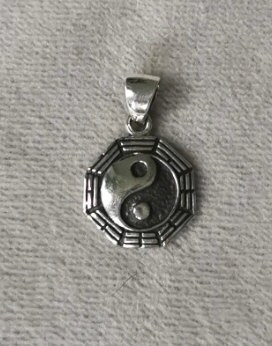In a world full of complexities, contradictions, and opposites, the concept of Yin and Yang serves as a guiding philosophy that explains the interconnectedness of all things. Originating from ancient Chinese philosophy, Yin and Yang represent dual forces that, while opposite, are deeply complementary. This principle is central to many aspects of Chinese culture, including medicine, martial arts, philosophy, and daily life.
The concept of Yin and Yang dates back thousands of years, first appearing in texts such as the I Ching (Book of Changes) and later being elaborated in Taoist and Confucian traditions. At its core, Yin and Yang describe the fundamental duality present in the universe. Yin represents qualities such as darkness, passivity, femininity, and receptivity, while Yang embodies light, activity, masculinity, and assertiveness. Importantly, neither can exist without the other, and they continuously transform into each other.
A common symbol representing Yin and Yang is the Taijitu, the iconic circle divided into two swirling halves—one black (Yin) and one white (Yang). Each half contains a small dot of the other color, signifying that within Yin, there is always a seed of Yang, and within Yang, there is always a seed of Yin. This symbolizes the ever-changing and interdependent nature of reality.
Yin and Yang are not static forces; they exist in a constant state of flux. For instance, day turns into night, summer transitions into winter, and rest follows exertion. These natural cycles illustrate how Yin and Yang are in perpetual motion, maintaining balance in the universe. This idea can also be applied to human experiences—happiness and sadness, strength and weakness, work and relaxation—all of which follow a rhythmic flow.A key principle of Yin and Yang is that extremes lead to imbalance. When one force dominates excessively, disharmony results. In traditional Chinese medicine, for example, an overabundance of Yang energy may cause conditions like restlessness, fever, or inflammation, while too much Yin could lead to lethargy, coldness, or sluggishness. The goal is always to restore equilibrium.
Traditional Chinese medicine (TCM) relies heavily on Yin-Yang theory. Practices such as acupuncture, herbal medicine, and tai chi aim to restore balance between these energies within the body. For example, if someone experiences excessive stress (Yang energy), they may be advised to engage in calming activities like meditation or drinking herbal teas (Yin elements) to counteract the imbalance.
Similarly, nutrition follows this principle. Foods are categorized as Yin or Yang based on their effects on the body. Cooling foods like cucumber, watermelon, and tofu are considered Yin, while warming foods such as ginger, garlic, and red meat are Yang. A well-balanced diet incorporates both types to maintain harmony.
Understanding Yin and Yang can help individuals achieve better emotional balance. In relationships, conflicts often arise when there is an imbalance of energies—one partner may be overly dominant (Yang) while the other is too passive (Yin). A healthy relationship requires a balance, where both individuals contribute their strengths and adapt to each other’s needs.In personal growth, people often struggle with balancing ambition (Yang) and relaxation (Yin). Working non-stop without rest can lead to burnout, while too much idleness results in stagnation. Recognizing the need for both activity and rest is essential for a fulfilling life.
Even in the workplace, Yin and Yang principles apply. Productivity thrives when there is a mix of focused effort (Yang) and strategic breaks (Yin). Studies have shown that employees who take breaks and allow themselves time to recharge are often more efficient than those who work endlessly without pause.Additionally, decision-making benefits from the Yin-Yang perspective. Analytical thinking (Yang) is necessary for problem-solving, but intuitive thinking (Yin) is equally important for creativity. The most effective leaders integrate both styles, ensuring well-rounded approaches to challenges.
In an era where extremism, burnout, and imbalance are common, Yin and Yang provide a timeless lesson: harmony is key. The rapid pace of modern life often encourages an overemphasis on Yang qualities—productivity, competition, and constant engagement—while neglecting the Yin aspects of rest, introspection, and patience. This imbalance leads to stress and societal disharmony.
For example, the rise of mindfulness practices in the West can be seen as a response to excessive Yang energy. Meditation, yoga, and slow living movements emphasize Yin qualities, helping people reconnect with balance. Similarly, discussions about work-life balance reflect the need to harmonize ambition with rest.
Furthermore, ecological concerns highlight the importance of Yin-Yang balance. Human activities often disrupt nature’s equilibrium, leading to environmental crises. Sustainable living promotes restoring this balance by harmonizing human needs with environmental preservation.


